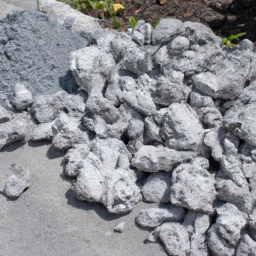How To Clean Landscaping Rocks
How To Clean Landscaping Rocks
Alternative Title: A Guide to Cleaning Landscaping Rocks
How to Clean Landscaping Rocks
Landscaping rocks are increasingly popular for residential and commercial properties, providing a low-maintenance, aesthetic addition to the yard or garden. But these rocks will need cleaning from time to time, to keep them looking their best. Here's a brief guide to cleaning landscaping rocks.
Understanding the Rocks
Before starting the cleaning process, it's important to consider the type of rock. Some rocks are more suited to certain types of chemical cleaners, while some are best left untouched. Knowing the type of rock you're working with will make the process much easier and more effective.
Limestone
Limestone is composed of calcite, which is vulnerable to acidity, so it's best to stick to a detergent solution when cleaning limestone. Avoid harsh chemical cleaners.
Granite
Granite is typically composed of quartz and feldspar and is generally resistant to chemical solutions. A gentle detergent solution can be used for soft dirt and grim buildup, but a stronger solution may be required for more stubborn stains.
Cleaning Process
Once the type of rock has been identified, the cleaning process can begin. Here's a simple four-step process to make sure the rocks are properly cleaned.
Step 1: Remove Loose Debris
The first step is to remove any loose debris from the rocks. A stiff brush or broom can be used to remove any loose dirt and debris from the rock surface.
Step 2: Pre-Treat Stains
The next step is to pre-treat any stains. For tougher stains, it may be necessary to apply a chemical cleaner before scrubbing. Be sure to use a pH-neutral cleaner so as not to damage the rock.
Step 3: Scrub and Rinse
Once the pre-treatment is complete, use a brush or cloth to scrub the rock surface. Rinse with a hose or bucket and repeat if necessary.
Step 4: Apply Sealant
To protect the rocks from future grime, a sealant should be applied. This will help keep the rocks looking fresh and protect them from dirt and water damage.
Additional Tips
Here are a few additional tips to maximize the cleaning process.
Use Protective Gear
When handling harsh cleaning chemicals, it's important to wear protective gear such as gloves and goggles. This will protect the skin and eyes from coming into contact with any chemicals.
Test on Small Areas First
It's always a good idea to try out any cleaning procedure on a small, inconspicuous area of the rock before using on the entire surface. This will ensure the cleaner is effective and not causing any damage.
Clean in Small Sections
Cleaning in small sections will help to ensure that all the dirt and grime is removed. Focus on one area at a time and make sure to rinse the rock surface thoroughly before moving onto the next.
Brief Recap
Cleaning landscaping rocks can help to keep them looking their best. Before starting, make sure to identify the type of rock and use a suitable cleaning solution. The cleaning process normally involves removing loose debris, pre-treating stains, scrubbing and rinsing, and applying a sealant. Finally, make sure to use protective gear and test on small areas before using any harsh chemicals.
Cleaning landscaping rocks may seem like a daunting task, but it doesn't have to be. By following this simple guide, you can keep your rocks looking great all year round!

Previous Page
Next Page
